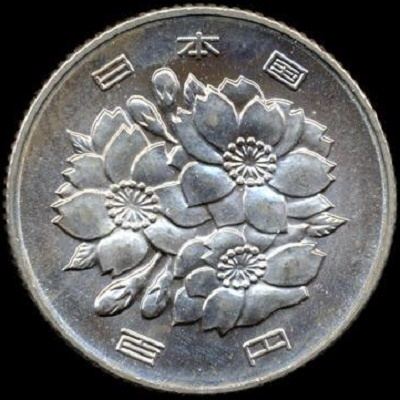Diameter 22.6 mm | Mass 4.8 g Shape circular Years of minting 1957–present | |
 | ||
The 100 yen coin (百円硬貨, Hyaku-en kōka) is a denomination of Japanese yen. The current design was first minted in silver in 1959 and saw a change of metal in 1967. It is the second-highest denomination coin in Japan after the 500 yen coin.
Contents
History
The first 100 yen coin was issued in 1957 and featured a phoenix on the reverse. It featured English language writing in addition to Japanese. This design was issued in 1957 and in 1958.
In 1959, the design was modified, removing the English wording, and changing the reverse side to show a sheaf of rice. The metallurgy remained unchanged. This design was issued every year from 1959 to 1966.
The current design for the 100 Yen coin was first issued in 1967. The metallurgy was changed from the former 60-30-10 ratio of silver-copper-zinc to a ratio of 75-25 copper-nickel, with the weight and diameter of the coin unchanged. The reverse side was changed to show sakura blossoms and the denomination in Japanese.
The coin shares, with the 50 yen coin, the emperor's rule date (28 in 2016) expressed with Latin numerals instead of in Japanese numerals.
Commemoratives
Showa
The following are circulation dates which cover Emperor Hirohito's reign. The dates below correspond with the 32nd to the 64th year (last) of his reign. One hundred yen coins had three main different designs, but there was no overlap in mintage between them. Coins for this period will all begin with the Japanese symbol 昭和 (Showa).
Heisei
The following are circulation dates in the reign of the current Emperor. Akihito was crowned in 1989, which is marked with a 元 symbol on the coin as a one year type. Coins for this period all begin with the Japanese symbol 平成 (Heisei).
